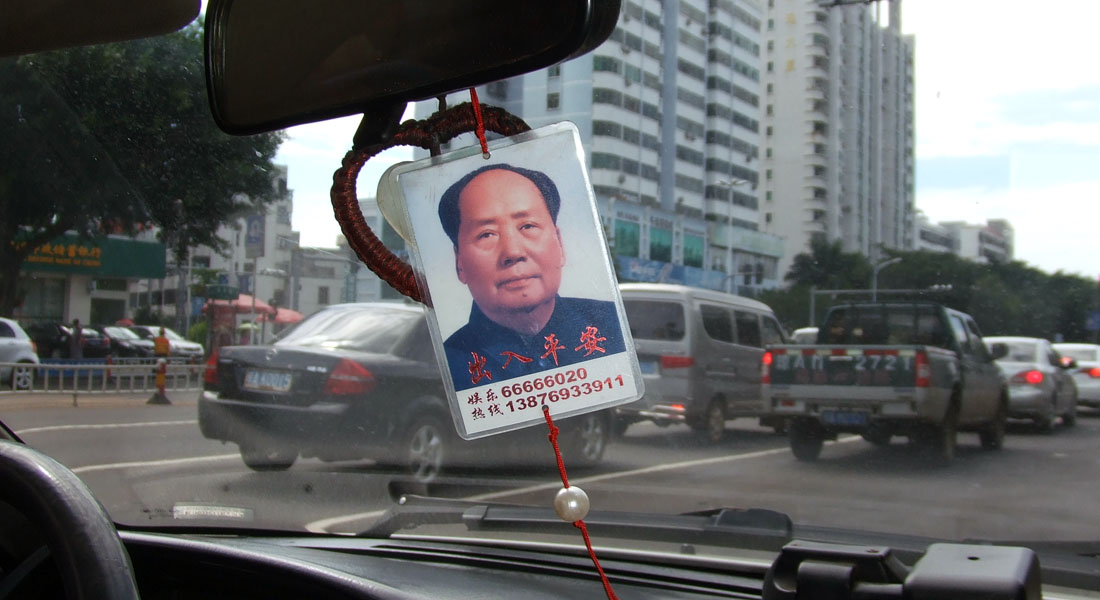
Everyday's traffic scene
Haikou (海口)
The capital of Hainan island is not quite the same dusky city you might expect in China. After checking out of the tidy Meilan airport, be ready to get mobbed by incessant touts. These touts are usually unlicensed private "taxis". A trip from Meilan airport right smack into the city centre would cost you RMB$45 by a metered taxi, RMB$50 if your taxi decides not to use the meter (try to always ask for the meter) and RMB$40 by these touts. Because these touts are unlicenced, and Hainan reserves a dainty reputation, try not to succumb to the mildly cheaper pricing. To avoid such touts, simply ignore them and walk right out of the main gate - plenty of taxis will await you there.
The ride to downtown (20 mins) will take you through much of the cityscape. The air is clean and coconut trees lined the roads. Traffic however, is as messy as anywhere else in China. Downtown Hainan is usually somewhere near People's Park (Ren Min Kong Yuan) - a medium-sized public park housing junkies at night. Ample family hotels can be found nearby, and they all range between RMB$200-300 a night, during non-peak seasons. I did not attempt to check out backpacker hostels.
I stayed in Sea View Hotel (Hai Jing Jiu Dian) opposite the park, and it was well worth the RMB$210.
What's there to do here?
While most tourists arriving in Hainan would aspire to head down to the perennial beach resort of Sanya, I personally feel that Haikou has simply the most to offer. Lonely planet book recommended a few historical sites, mostly memoirs to exiled imperial court officials but as I am quite immune to such tourist-cliches (having been to many places in China), I gave them a miss. This is what I feel is worth doing in Hainan.
1) Select your own live seafood, and then eat them: When people tell you Sanya or anywhere else has the cheapest seafood, tell them to bugger off. Haikou, the capital, offers the cheapest. Take a taxi from downtown Haikou (15mins, RMB$14) to White Sands Market (Bai Shan Guang Cang), and you will find many fish and vegetable mongers displaying their produce. Buy a couple of seafood and green vege and walk across the market to Three Sister restaurant (San Jie Cang Guan) for them to cook your buys. You can bargain hard. Fresh seafood deliciously prepared, this activity is well worth all the effort reaching Hainan. A simple earthly delight.

Choose your poison and..
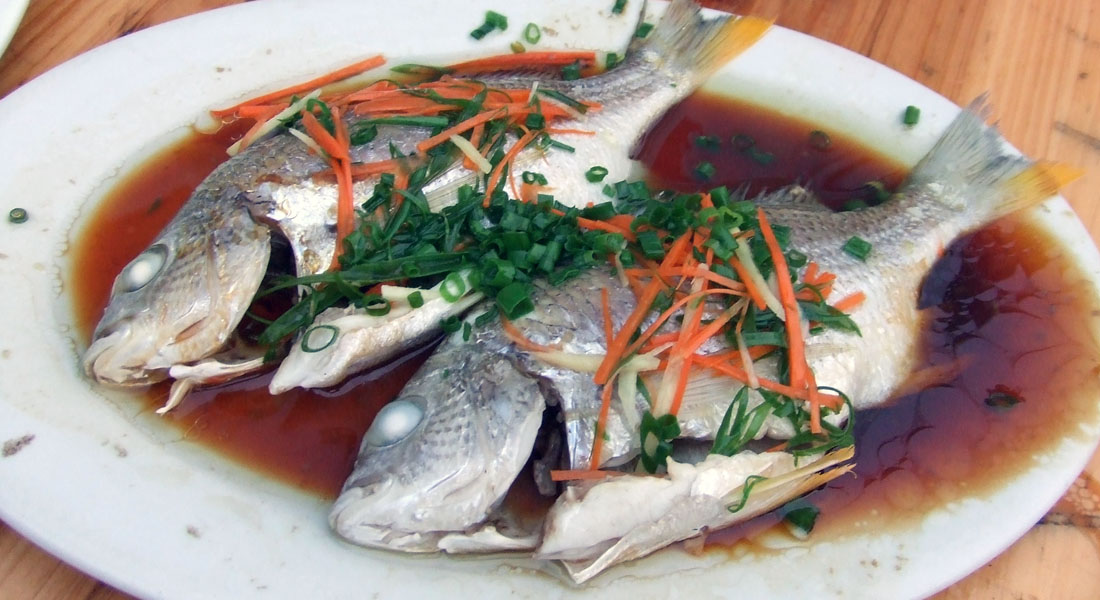
Eat them!
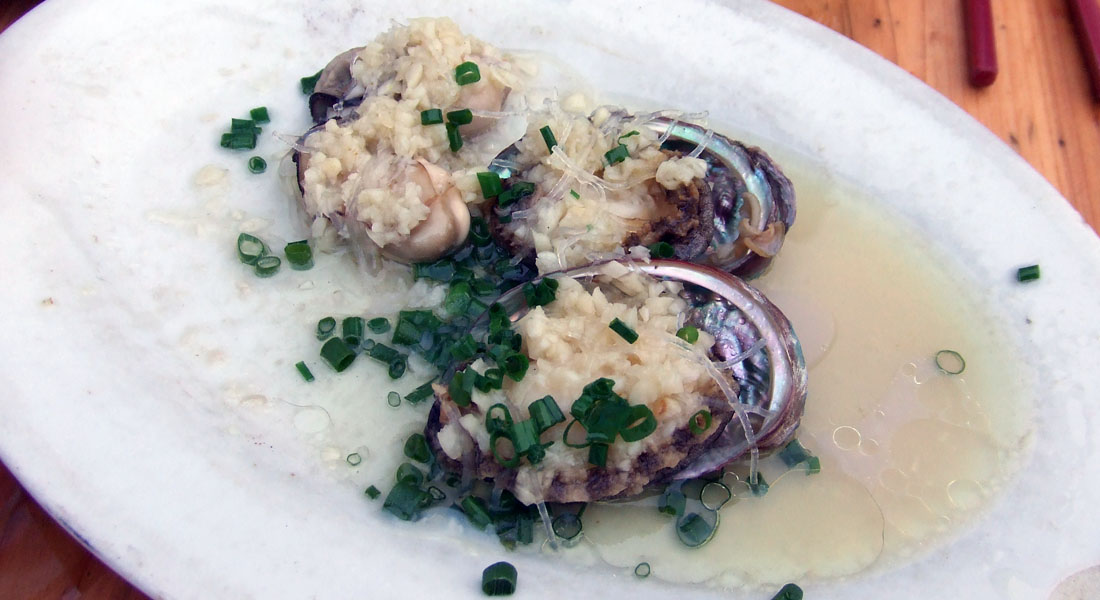
Live abalone and fresh oysters prepared in Hainanese style - with lotsa ginger and vermicilli.
2) Get lost in the bustling streets: Tuck neatly between the newfound neon of Haikou's shopping districts lies a neat gem. To get to this place, take a taxi to Walking Street (Bu Xing Jie), which itself is a busy typical Chinese shopping district, full of fakes and what not. Take your time to walk through the length of the street until you hit a junction, where the crowd seemingly thins. Don't be fooled - the fun has yet to begin.
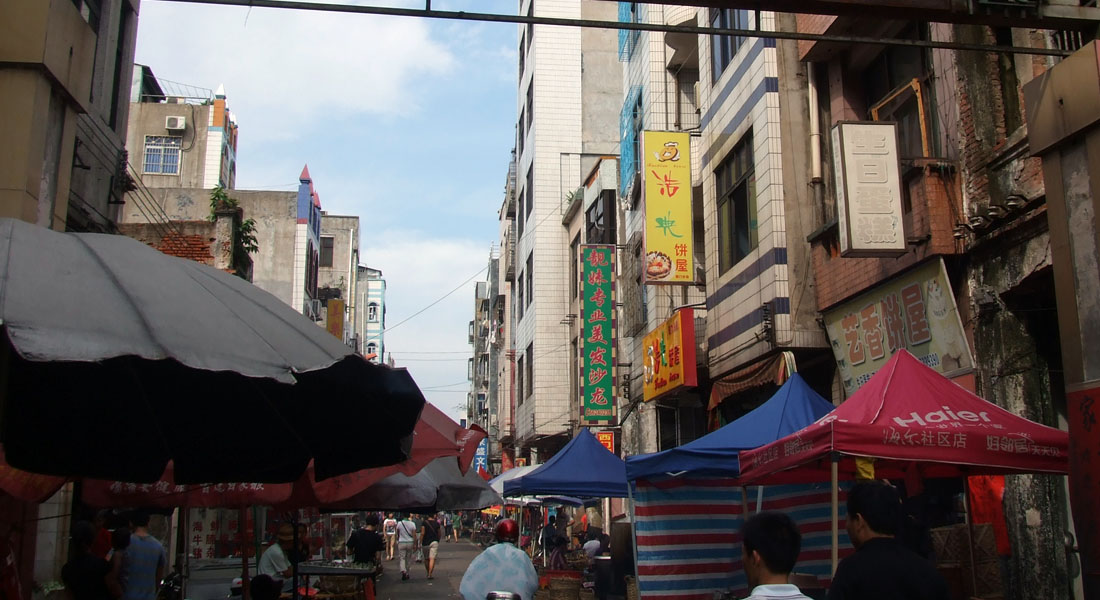
Xi Men (西门): a long stretch of roadside stalls and interesting buys by locals for locals
After you hit the junction, turn right and follow the road down about 100metres - don't worry, the locals (sometimes) will be happy to show you the way. You will see a metallic gateway with the sign: 西门. Follow the lane through and discover hundreds of road side stalls. Many of them are simply extensions of the quaint shophouses on the sides. The time I was there was a few days before Duan Wu Jie (Dumpling Festival), and people were preparing dumplings by the side. Also spotted were a few people hawking antiques and communist memorablias. Communist collectibles (esp during the cultural revolution) are worth buying but anything before that is probably fake. You might also see a few local selling the locally famous Wenchang chicken or maybe even a suckling pig.
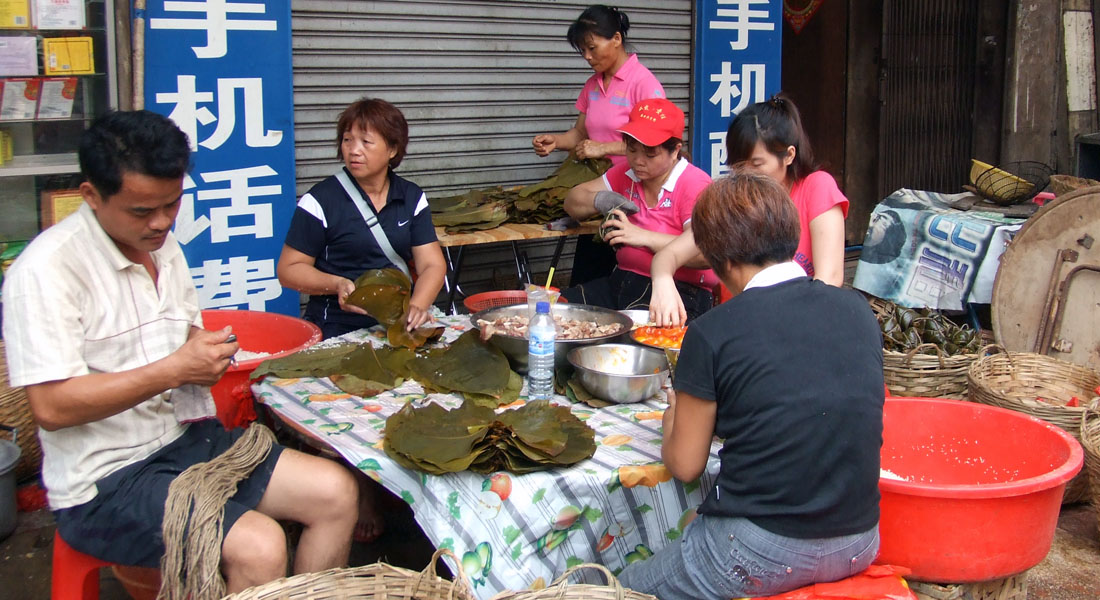
Dumplings are made by wrapping glutinous rice, pork, red bean and nuts with bamboo leaves. They are then steamed for many hours.
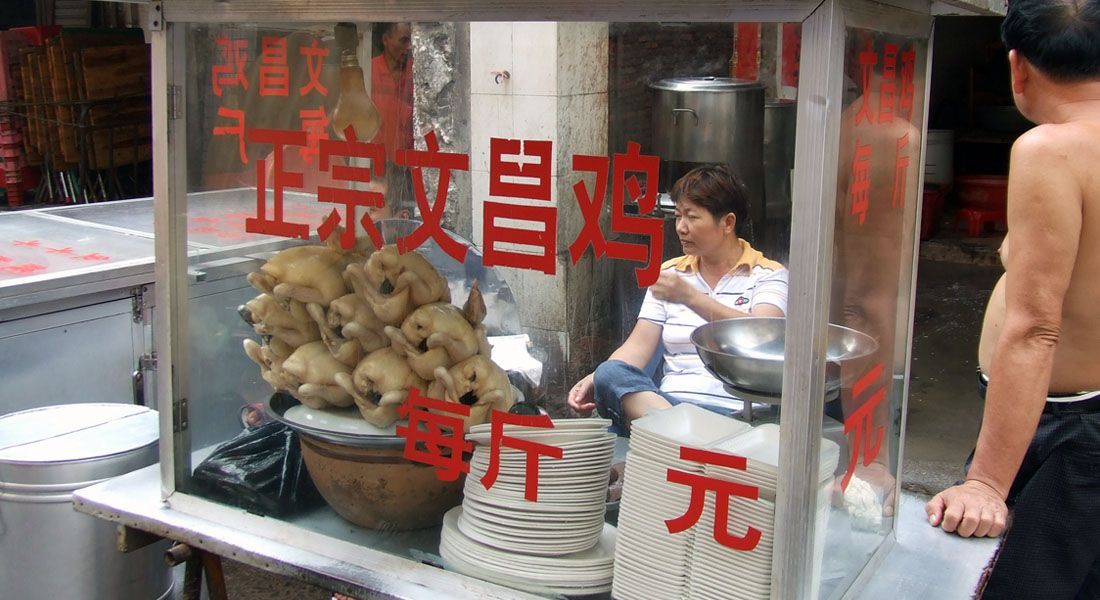
Wenchang chicken retails at RMB$22 for every half kg.
Follow Xi Men lane through and you will arrive at yet another Dong Men (东门). Dong Men is all of wet market produce: dried seafood, and live chickens, pigeons, tortises (some maybe a few decades old), snakes, giant rabbits and even cats for consumption. As an animal lover, the sight of sickly cats with pus-encrusted faces caged in metallic squalor is not suitable for all to stomach. Cats are sold as food for RMB$13 for every half a kg. Absolutely sad. Please do not ever, buy anything from vendors in 东门 because you might be encouraging the trade. As a (Singaporean) Chinese myself, I must say I am ashamed that my culture has evolved around eating little domestic animals.
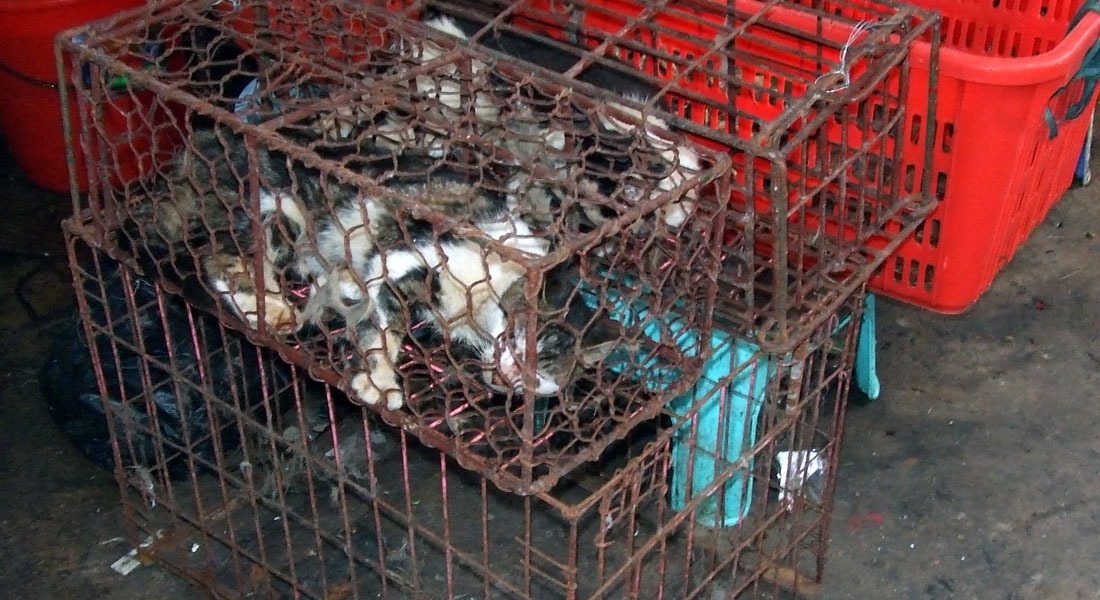
Kitties in cages for slaughter. A true low point for the Chinese civilization.
After shedding a few tears/getting into a rhetoric with the local hawkers at 东门, feel free to explore the neighborhood. A Nan Men (南门) exists as well, but is about half a km further from the junction between the above mentioned lanes. 南门 is disturbingly huge and boisterous, and can swallow you alive. But that's what we're here for, aint it?
3) Apart from the local buys you might gather above, the malls around People's Park are buzzing with millions of unique buys. You can spend hours after hours choosing Chinese textile, copycat electronics and interesting toys. Restaurants are everywhere too. If you are thirsty, ample coconuts (RMB$4/5) are available everywhere.
Getting out
Bored of Haikou? Most tourists will head down to Sanya (3.5hours, RMB$80) via an express coach. For me, I took a 1.5 hour (RMB$14) ride to Wenchang, the source of Hainanese immigration to Singapore.